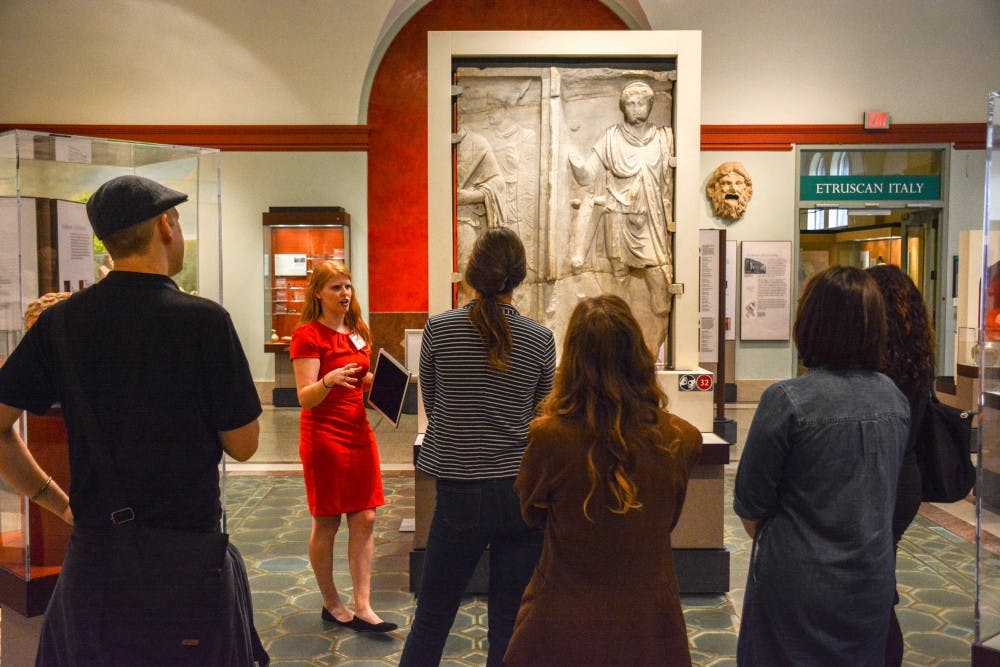Incantation bowls, a mask of a demon, and a mummified cat — a new Penn Museum program, the Daily Dig, is showcasing one of these artifacts each day in a week-long series in the spirit of Halloween.
Launched this September, the Daily Dig features speakers who choose an artifact of personal significance to them and provide museum visitors a 15-minute detailed history of the object on display. The presenters range from museum leaders and curators to graduate students, and there are several special presentations taking place this week for Halloween.
As a part of the Halloween series, head conservator Lynn Grant offered her unique perspective on the Maikop Plaque, which features griffins made of gold. She was especially adept to lead this Daily Dig given her experience conserving the artifact twice. Other Halloween offerings include incantation bowls and the Humbaba Mask.
Sarah Linn, a 2018 PhD graduate and the newly appointed Research Liaison at the Penn Museum, serves as a coordinator of graduate student presentations for the program.
When proposing that graduate students get involved in the Daily Dig, Linn emphasized the benefits brought to both the students and the museum visitors.
“It’s a really good opportunity for [graduate students] to frame the research that [they] do for a different audience,” she said, also noting that visitors profit from a more personal connection with both the students and the artifacts on display.
Emily French, a fourth-year School of Arts and Sciences student and Daily Dig presenter, echoed Linn’s thoughts, noting that “it’s easy in academia to be isolated from the general public and … focus on our own work and not really think about the ways that we can make it relevant to a wider audience.”

Photo by Jenny Wan
RELATED:
Penn Museum's refugee and immigrant tour guides inspire deeper interest in Middle East
New Penn Museum program brings tour guides from around the world
Yael Eytan, director of Marketing and Communications at the Penn Museum, highlighted the program’s convenience and use as a method to connect the people behind the exhibits with museum visitors.
The program is part of the museum’s efforts to make the exhibits accessible amid its renovation, as the Daily Dig is free with Museum admission, Eytan said.
Charlotte Williams, a first-year School of Arts and Sciences student, recently made her first Daily Dig presentation. When choosing artifacts to present, she made an effort to choose objects that visitors might accidentally walk past when wandering the galleries.
While museum tours might mention many objects, a Daily Dig “forces you to focus on something and truly take the time to appreciate it,” Williams said.
“It’s easy to get lost in all of the writing,” French said. “This can give people something really interesting that they can take away.”









